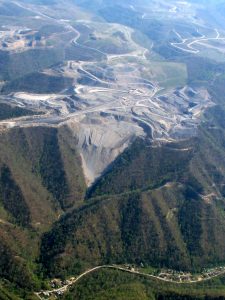- Like
- Digg
- Del
- Tumblr
- VKontakte
- Buffer
- Love This
- Odnoklassniki
- Meneame
- Blogger
- Amazon
- Yahoo Mail
- Gmail
- AOL
- Newsvine
- HackerNews
- Evernote
- MySpace
- Mail.ru
- Viadeo
- Line
- Comments
- Yummly
- SMS
- Viber
- Telegram
- Subscribe
- Skype
- Facebook Messenger
- Kakao
- LiveJournal
- Yammer
- Edgar
- Fintel
- Mix
- Instapaper
- Copy Link
Main Points:
- While several thousand square kilometers of land area have been subject to surface mining in the Central Appalachians, no reliable estimate exists for how much coal is produced per unit landscape disturbance.
- A one-year supply of coal would result in ∼2,300 km of stream impairment and a loss of ecosystem carbon sequestration capacity comparable to the global warming potential of >33,000 US homes.
Overview Summary
- Study Background:
- Digital images from a multispectral scanner and units of coal production were compared to understand the correlation between coal production and environmental impact.
- Mined areas were defined as any bare rock or soil land cover that was not within a 400 m buffer surrounding highways, rivers, or agricultural areas.
- Findings:
- Given 11,500 tons of coal are produced per hectare disturbed, we estimate 0.25 cm of stream length was impaired, on average, for every ton of coal produced.
- From 1985-2005, nearly 2,000 km2 of land area was mined, which is comparable in size to the Great Smoky Mountains National Park.
- Conclusions:
- While the scientific community has adequately demonstrated the severity of surface mining impacts, considerably less attention has been placed on understanding the extent of these environmental impacts and in providing the metrics necessary to compare these environmental costs to the obvious economic benefits of coal.
- Tremendous environmental capital is being spent to achieve what are only modest energy gains.
- Implications:
- Cumulative coal production within the study area totaled 1.93 billion tons over the 1985–2005 period, or approximately two years’ worth of current US coal demand.
- If all current US coal demand were to be supplied from surface mines in the Central Appalachians, an area equal in size to Washington DC (177.6 km2) would need to be mined every 81 days.
- Policy Considerations:
- It is difficult, if not impossible, for policymakers to weigh the costs and benefits of MTR if the environmental impacts are not conveyed in terms of coal production.
- To supply one year of current US coal demand would require converting 803 km2 of Appalachian Mountains to surface mines, leading them to the biological impairment of an estimated ∼2,300 km of streams and forgone ecosystem C sequestration of ∼185,000 Mg C yr−1 (equivalent to the global warming potential of approximately 33,600 average US single family homes).
- Funded by and/or conducted by:
- The authors thank J. Amos and D. Campagna for supplying the initial mine delineation data.
Citation: Lutz, Brian D., Emily S. Bernhardt, and William H. Schlesinger. “The Environmental Price Tag On A Ton Of Mountaintop Removal Coal.” Plos One 2013.E73203 (2013): GeoRef. Web. 15 Feb. 2017.









